Prevention of Cognitive Decline and Alzheimer’s
Recent research, some of which was sponsored by ARPF, supports the notion that lifestyle interventions can help decrease chances of developing memory loss and possibly help prevent Alzheimer’s disease.
Lost your password? Please enter your email address. You will receive a link to create a new password.
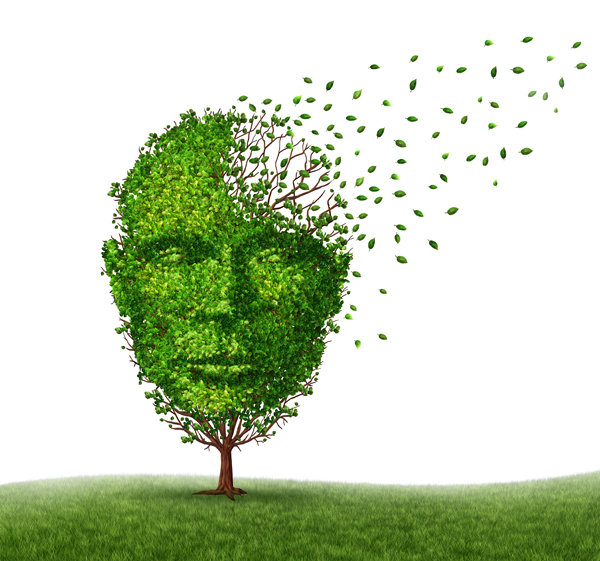
Recent research, some of which was sponsored by ARPF, supports the notion that lifestyle interventions can help decrease chances of developing memory loss and possibly help prevent Alzheimer’s disease.

Although there are natural physiological changes that occur with age, memory loss is neither normal nor a natural process of aging. It is important to take a proactive role in retaining the strength, resiliency, and vitality of the brain. Research has shown that just as the body needs strength-building exercises to maintain muscle strength, so does the brain.

Laymen (and even medical professionals) still often have difficulty recognizing dementia, as opposed to Alzheimer’s disease.
And while the symptoms and even some of the prevention methods may be similar, we need to find a better way to distinguish between the two if we are to provide the best level of care to patients.
 Let’s explore some of the traits of each, and examine how we can prevent them:
Let’s explore some of the traits of each, and examine how we can prevent them:
Dementia is an umbrella term used to denote a decline in mental ability that is severe enough to interfere with daily life. As opposed to Alzheimer’s, it is not a specific disease.
Alzheimer’s is a degenerative brain disease, where plaques containing beta-amyloid form in the brain, causing cell damage and complex changes. This damage results in dementia symptoms that will get worse as time goes on. It is also one of the most common causes of dementia. Dementia can also be caused by Huntington’s disease, Parkinson’s disease, and Creutzfeldt-Jakob disease.
While it most often occurs in patients over the age of 60, early-onset Alzheimer’s can begin to show symptoms after the age of 30, typically in patients with a family history of the disease. It is believed these cases account for around 5% of the total number of patients with Alzheimer’s.
Alzheimer’s is currently the sixth leading cause of death in the US, and possibly third as a cause of death in the elderly.
One of the most typical early signs of Alzheimer’s is trouble retaining recent information, as the disease tends to affect the part of the cerebrum that is associated with learning first.
Other symptoms, in no particular order of severity and manifestation, include:
The main challenge we face in the treatment of Alzheimer’s disease is understanding its underlying causes. While we know it is caused by changes and damage to brain cells, the cause of these changes remains unknown to this day.
Patients suffering from dementia have trouble keeping track of time and space. They become repetitive, their judgment is impaired and they often forget to eat, bathe, and perform the simplest tasks.
The early warning signs of dementia include, but are not limited to:
Dementia patients are mostly unaware of their symptoms, and their loved ones are the ones to notice they’re losing their keys, mixing up dates, and forgetting to take the trash out.
There are several types of dementia we have been able to identify:
Dementia can also be caused by brain tumors, HIV, Niemann-Pick disease type C, progressive supranuclear palsy, and other diseases or conditions.
To sum it up: dementia, as a cluster of symptoms, and Alzheimer’s, as a specific disease (and the leading cause of dementia), naturally share the same symptoms.
The treatment of dementia will depend on its underlying cause. When caused by Alzheimer’s, there is no cure for it, and there is no treatment that can stop its progression. There are treatments that will combat some of the lesser or more severe symptoms, but we haven’t yet found a way to reverse or pause the ongoing damage.
This fact alone is the cause of much despair among the families of patients suffering from any form of dementia.
There are signs that the early detection and treatment of Alzheimer’s can improve patient quality of life. And when that’s all that’s left in the absence of a cure, it becomes even more imperative we do our best to prevent this disease.
Evidence has been found that the risk factors that cause heart disease, including high blood pressure, high cholesterol, and diabetes may also contribute to the development of Alzheimer’s.
However, there is no sufficient evidence to provide any substantial proof as of yet. The prevention methods recommended for dementia and Alzheimer’s focus on improving overall health and exercising your brain.
Some of the courses we can advise our patients include:
Naturally, this diet should focus on eating 80% of the foods that are actually good for us, and getting most of our nutrition from fruits, vegetables, and lean meats, as opposed to fast food choices and high-sugar options. Cutting down on caffeine and alcohol intake can also prove beneficial.
 Movement is one of the keys to preventing any disease, and encouraging at least three 30-minute sessions per week should be imperative. As diets, exercise regimes should be tailored to a patient’s needs and preferences. Instead of being made a chore, regular exercise should be an enjoyment and a clear avenue to improved overall health.
Movement is one of the keys to preventing any disease, and encouraging at least three 30-minute sessions per week should be imperative. As diets, exercise regimes should be tailored to a patient’s needs and preferences. Instead of being made a chore, regular exercise should be an enjoyment and a clear avenue to improved overall health.Alongside heart disease and cancer, Alzheimer’s and dementia remain the most explored and discussed diseases of our time. We may not see a cure for any of them in our lifetime, and that’s all the more reason to remain vigilant in trying to prevent them. A large part of these prevention efforts entails exploring different avenues in achieving a healthier body and mind, as this remains the only course available to us at the time.
Sarah Kaminski earned her bachelor’s degree in Health Sciences. Due to her parent’s declining health, she decided to become their full-time caregiver. Now, she takes care of her loved ones and writes about the things she learned along the way. Sarah is a life enjoyer, positivity seeker, and a curiosity enthusiast. She is passionate about an eco-friendly lifestyle and adores her cats. She is an avid reader who loves to travel when time allows.
References:
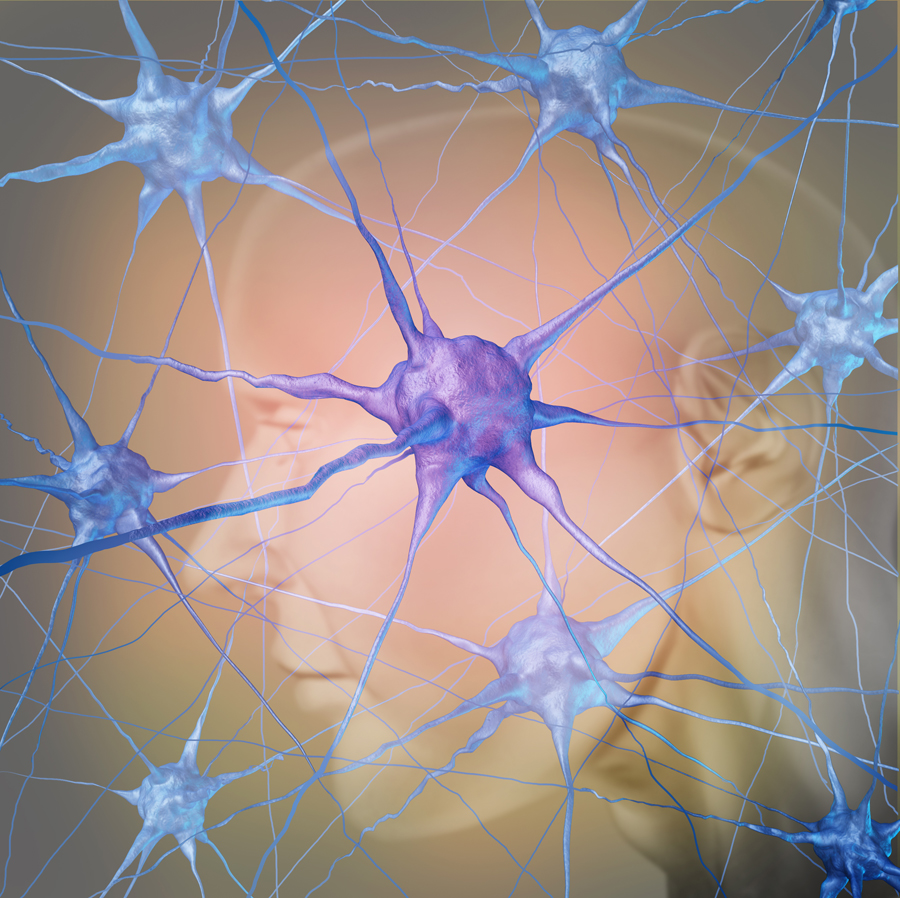
Humanity is racing toward a brain-health crisis, according to the World Health Organization. The number of people with dementia is expected to triple in the next three decades.
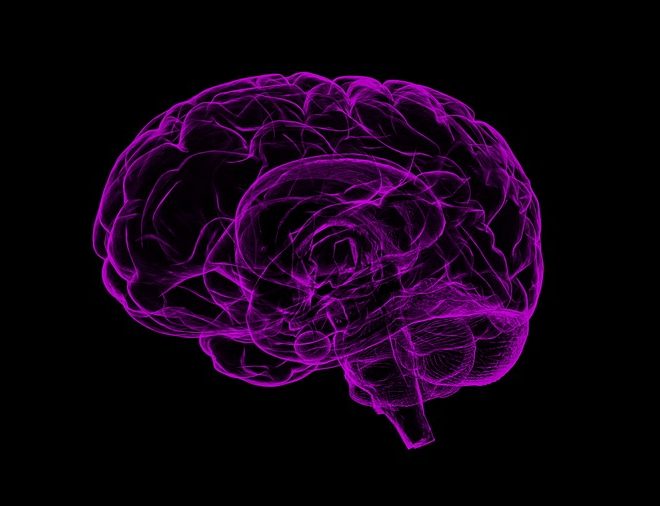 The helpful news from WHO is this: Exercise plays a key role in fighting cognitive decline and dementia.
The helpful news from WHO is this: Exercise plays a key role in fighting cognitive decline and dementia.
So, those of us in the fitness industry have a greater chance than ever to make a big impact by including brain health in our training and interactions with people over 50.
That’s the message of Ryan Glatt, a brain health coach at the Pacific Brain Health Center. Ryan and the Functional Aging Institute worked together to bring you the Brain Health Trainer Certification. It’s a unique program that teaches about the connections between brain and body health – and about how fitness professionals can help mature adults with both.
“We can play a significant role in delivering exercise interventions for the primary outcome of brain health, and not just as a secondary benefit of exercising,” Ryan says. “We need to do more.”
Fitness professionals have three steps to follow, he says.
Trainers need to encourage clients to have a well-rounded exercise routine that includes balance, resistance training, and cardio work. It helps to know how some activities can have specific benefits on memory, attention and other brain functions. That includes, for instance, dance, sports and martial arts, which involve some level of choreography, which is good for the memory.
Even in initial assessments with prospective clients, fitness pros can learn to raise the topic, Ryan says. For example, if a prospect in her 50s says she wants to lose weight, you can bring up the topic of brain health even at that early stage. “There’s a growing body of research that links exercise to brain health,” you might say. “Does that sound like something you’d like to work on, as well?”
That can open the conversation to topics that might indicate a referral is necessary – or help you build a fitness program to address them.
“We like to tell people that exercise will help them be able to play with their grandkids,” Ryan points out. “But we can also help train them so that they also can remember their grandkids’ names better.”
Brain health is a big, rich topic that we’re going to be hearing more about. Any fitness professional helping mature people live well should be educated on how to help with their brain health, too.
Ryan Glatt, FAFS, BSc is a psychometrist and Brain Health Coach at the Brain Health Center in the Pacific Neuroscience Institute. With a strong background in exercise science and human health, Ryan develops curricula specifically targeted towards those with dementia, Parkinson’s disease, Autism Spectrum Disorders (ASD), and traumatic brain injury, coaching individuals towards optimal brain health.
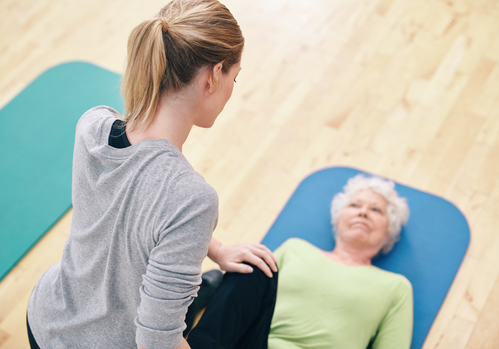
Many people are aware of the devastating effects dementia and Alzheimer’s disease (AD) has on families. I know this devastation personally, as my mother suffers from advanced stages of AD. It is very sad to have only the body present of someone you have known and loved your whole life! This article will discuss some of the newer developments in understanding and possibly reducing the disease, as well as the positive role exercise may have in slowing the onset and development of symptoms, and disabilities for any form of dementia.
The impact on family units and caretakers is even greater and can’t be measured by financial impact. Dementia is a group of symptoms that affect mental tasks like memory and reasoning. Dementia can be caused by a variety of conditions, the most common of which is Alzheimer’s disease. Alzheimer’s disease accounts for 60 to 80 percent of dementia cases (http://www.alz.org). Much of the recent attention to professional football players and the repeated brain trauma is due to the increased incidence of dementia, not Alzheimer’s. Dementia is characterized by loss of memory, intellectual capabilities and executive functions.
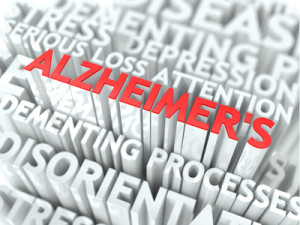 According to the Alzheimer’s Association, in 2015, 5.3 million Americans are believed to have this incurable disease. The cost of Alzheimer’s to the U.S. is $226 billion, and this figure is estimated to more than quadruple to $1.1 trillion by 2050 unless some major discoveries are made. It is the 6th leading cause of death behind heart disease, strokes, and cancer but it is the only one that cannot be prevented. One in three seniors will die with some form of dementia. Alzheimer’s is far more prevalent in women, with about 3.2 of the 5.1 million people, or 2/3rds, being women. The Baby boomer generation should cause the number of those affected to swell to 7 million, which may double by 2050. (http://www.alz.org/facts/overview.asp).
According to the Alzheimer’s Association, in 2015, 5.3 million Americans are believed to have this incurable disease. The cost of Alzheimer’s to the U.S. is $226 billion, and this figure is estimated to more than quadruple to $1.1 trillion by 2050 unless some major discoveries are made. It is the 6th leading cause of death behind heart disease, strokes, and cancer but it is the only one that cannot be prevented. One in three seniors will die with some form of dementia. Alzheimer’s is far more prevalent in women, with about 3.2 of the 5.1 million people, or 2/3rds, being women. The Baby boomer generation should cause the number of those affected to swell to 7 million, which may double by 2050. (http://www.alz.org/facts/overview.asp).
While no one really knows exactly what causes Alzheimer’s disease (AD), there are several factors that are highly associated with it, and even some treatments that seem to slow its progression and onset. The two most prominent factors associated with AD are age and family history.
After age 65, the risk of Alzheimer’s doubles every five years. After age 85, the risk reaches nearly 50 percent. A type of AD is known as early onset or younger onset. This term actually is used for two types, a risk and deterministic form. Both may start in someone’s 30s or 40s and if someone has the gene it is 100%. This “determined” form is rare, accounting for only 5% of the total cases. Research has shown that those who have a parent, brother, sister or child with Alzheimer’s are more likely to develop the disease. The risk increases if more than one family member has the illness.
Biomarkers of Alzheimer’s Disease
(http://www.alz.org/research/science/alzheimers_research.asp)
When diseases tend to run in families, either heredity (genetics) or environmental factors, or both, may play a role. There are two categories of genes influencing a person developing a disease: risk genes and deterministic genes, both of which are present in Alzheimer’s disease.
Risk genes increase the likelihood of developing a disease, but do not guarantee it will happen. Researchers have found several genes that increase the risk of Alzheimer’s. Apolipoprotein (APOE)-e4 is the first risk gene identified, and has the strongest impact on disease risk. APOE-e4 is one of three common forms of the APOE gene; the others are APOE-e2 and APOE-e3.
Those who inherit one copy of APOE-e4 have an increased risk of developing Alzheimer’s and those with two copies have an even higher risk, but still not a certainty. In addition to raising risk, APOE-e4 may tend to make symptoms appear at a younger age than usual (early onset). Scientists estimate that APOE-e4 is implicated in about 20 to 25% of Alzheimer’s cases.
We often associate brain size with cognitive capacities and for the most part this relationship holds true. While it is very difficult to measure any increase in mass due to neuroplasticity, we can measure increase activity in the brain due to exercise, or decreased activity from AD and other dementias.
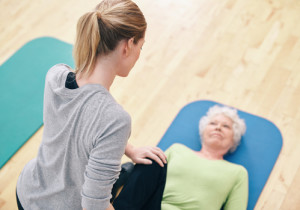 It is important to understand some of the limitations of exercise and diet in helping either dementia or AD. First of all, one must separate non-Alzheimer’s dementia from Alzheimer’s, and then must understand what stage of AD the individual is in. Finally, one must realize if the symptoms have already manifested (onset), and then monitoring the progression.
It is important to understand some of the limitations of exercise and diet in helping either dementia or AD. First of all, one must separate non-Alzheimer’s dementia from Alzheimer’s, and then must understand what stage of AD the individual is in. Finally, one must realize if the symptoms have already manifested (onset), and then monitoring the progression.
Exercise has a more pronounced effect on helping decrease progression and even reversing some symptoms with non-Alzheimer’s dementia. In addition, the earlier someone is able to perform preventative actions, the greater the effect those therapeutic actions will have. Exercises that really activate the brain such as dance, yoga, and new sports or techniques are the best for prevention.
By exercising regularly throughout your life you will lower your incidence of getting Alzheimer’s by 50% and by doing mental exercises with the physical exercises may lower your chances by 70%! This reduction would not apply to those with deterministic genes but it would for others. Some researchers believe exercise can both delay onset and reduce symptom severity no matter what the cause.
Aerobic exercise in particular causes a release of brain derived neurotropic factor, which has been labeled as “Miracle Gro for the Brain” by the author of SPARK, John Ratey, M.D. In addition, aerobic exercise causes some angiogenesis or the development of additional circulation to the brain. When the brain cells receive more blood, they get more oxygen, and thus function better.
Other side benefits of exercise are the muscle strengthening and enhanced balance and activation of postural muscles. Many Alzheimer’s patients will be at risk for falls and disturbed gait patterns. A consistent exercise program can delay and slow these issues even in somewhat advanced stages.
The dosage is the same as that for the general public or 150 minutes of moderate activity a week. It is important not to push an Alzheimer’s patient into exercise. Many AD victims can become agitated quite quickly and the stress is unwarranted. Simply walking is the best exercise. Make sure the walking path is smooth and not filled with obstructions or difficult terrain.
In an article from Science News, “Walking slows progression of Alzheimer’s”, Cyrus Raji, Ph.D., from the Department of Radiology at the University of Pittsburgh in Pennsylvania, mentions, “We found that walking five miles per week protects the brain structure over 10 years in people with Alzheimer’s and MCI, especially in areas of the brain’s key memory and learning centers. We also found that these people had a slower decline in memory loss over five years.
The type and magnitude of exercise needs to be carefully monitored with advancing Alzheimer’s or dementia but in those with mild cognitive impairment, a “healthy dose” of both resistance and aerobic exercise is advocated.
Dr. Mark Kelly Ph.D., CSCS, FAS, CPT has been actively involved in the fitness industry spanning 30 years as a teacher of exercise physiology at academic institutions such as California State University, Fullerton, Louisiana State University, Health Science Center, Tulane University and Biola. He was an exercise physiologist for the American Council on Exercise, a corporate wellness director, boot camp company owner and master fitness trainer.

 You are having dinner with a friend and notice a softball-sized protrusion on the left side of your friend’s head. Do you inquire about your observation? Maybe you make jokes? Or, perhaps you choose to remain silent.
You are having dinner with a friend and notice a softball-sized protrusion on the left side of your friend’s head. Do you inquire about your observation? Maybe you make jokes? Or, perhaps you choose to remain silent.
When we experience or witness cognitive declines, we meet them with resistance and say: “Dang it. Where the heck are my keys?” Or, “Idiot. I hate when I can’t remember.” Or, “Geez, how many times do we have to have this conversation?”
Sometimes, we say nothing.
Silence speaks unkindly.
Despite popular beliefs about cognitive decline being a natural concomitant of the aging process, the National Institute of Health on Aging reminds us that “age-related changes in cognition are not uniform across all cognitive domains or even across all [people ages 65 and greater.]” There is tremendous variability in cognitive functioning among people who comprise this heterogenous group – humans who’s ages are 65 and greater.
And when cognitive shifts do present, often as an inability to remember recently learned information, important dates or repeating questions – we, yet again, opt for silence.
Or, we ignore, deny, hide and humor.
It is estimated that 60% of female and 70% of male Americans will live dementia free lives.
In a fear-based culture, one that favors an us vs. them mindset, these sorts of comforting statistics do not readily capture our attention. Instead, we glom onto facts such as: “There are 5.4 million Alzheimer’s patients in the United States.” For these millions of Americans, their existence is described as “terrible,” “they’ve been robbed of their memories,” and “this is just devastating.” These stories are of loss, wrapped in loss, and suspended by more loss.
Yes. It has been suggested that in the brains of people affected by Alzheimer’s (as determined by autopsy), there is evidence of diminished neural connections, brain atrophy or surface area decreases, neurofibrillary tangles and cellular death. This is just to name a few of the potential losses evidenced in the brain.
However, these changes are often foreshadowed by present-day behaviors and interactions presented by people affected by Alzheimer’s. When we talk about how terrible Alzheimer’s is, this has the potential to inform and shape people’s experiences. How different would our experiences be if we used language of strength and resilience and gratitude to frame the story of cognitive transformations?
What if we begin the story from a different vantage point? A story that begins by us listening rather than narrating. One that holds as the hero of the story the one who is directly affected by Alzheimer’s.
When I read statistics on the number of people in the U.S. affected by Alzheimer’s, I interpret this as the number of possible teachers waiting for class to begin. Yes. People affected by Alzheimer’s have much to teach.
We have much to learn. We know so very little. We could equate our knowledge with the measurement of animals from largest to smallest. Our knowledge is equivalent to that of a tiny crustacean, a Stygotantulus, that measures a tenth of a millimeter in length.
When we stop fearing them and start seeing them as us, maybe then we will be ready for class to begin. Maybe then we will begin to learn.

These teachers hold valuable gifts in the realm of practicing present moment awareness. We could only hope to be so lucky to be chosen to be a teacher.
When we show up for class, with a mindset of not-knowing, perhaps then we can begin to meet cognitive transformations with curiosity, rather than resistance, and begin saying: “Deep breath in, my keys are temporarily out of sight?” Or “Gosh, I wonder how long this will last?” Or “Curious. It appears to me that for you this is the first time we are having this conversation?”
If you’re not ready for class to begin, this is perfectly fine.
Please though, say something to your friend when you notice a softball-sized protrusion that presents as forgetting important dates.
Be brave.
Choose to speak kinder than silence. These are gifts.
Adrienne Ione is a dynamic, mindful, high-fiving, cognitive behavioral therapist, certified dementia specialist and senior personal trainer. Founder of Silver Linings Integrative Health, a company with an aim of promoting health, fitness and wellbeing opportunities for people to thrive across the lifespan.

 When you are organizing an event, say, the Tacoma South Sound Alzheimer’s Walk, there can be an illusion that all moving parts are in your control, leaving you thinking: this event will be successful/fantastic/memorable (insert your favorite adjective here) so long as I check off all items on my to-do list.
When you are organizing an event, say, the Tacoma South Sound Alzheimer’s Walk, there can be an illusion that all moving parts are in your control, leaving you thinking: this event will be successful/fantastic/memorable (insert your favorite adjective here) so long as I check off all items on my to-do list.
We could view life as an event. The event. So the narrative goes, as long as I check-off all of the items: be respectful, do good, establish a career and so on, then I will be successful or (insert your favorite adjective here).
In today’s early Autumn event, there is at least one piece that remained uncheckable. The weather.
The weather, with all of its unknowns and impulsivity is similar to a diagnosis of Alzheimer’s.
During a two-hour period of time, 11 a.m. to 1 p.m., there was as much variation in the sky as there were people populating Todd Field, at the University of Puget Sound.
The sky was a solid sheet of arctic blue separated only by two main air streams. Within a matter of minutes, the sky shifted to an admiral blue populated by picture-book clouds and rays of sunshine. The imperceptible breeze shifted to barely detectable rain droplets.
A mildly warm autumn afternoon became disguised by a frigid rain storm too gusty even for an umbrella. In between the dramatic changes were the smaller ones too, warm became cold when some cumulus clouds blocked the now feeble sun, rain became stinging stones.
Miniature purple cowbells chimed. Pieces of synthetic orange, yellow and purple flower petals swirled in the air and decorated sidewalks. Bubbles were attempting to be blown from wands. Umbrellas flipped inside out. The announcer suggested over the loud speaker: 1-milers to the left and 2-milers to the right. Do I go left or right? Make a decision.
In the early stages of diagnosis, one may be hesitant or resistant to know more about Alzheimer’s.
For a moment, wicked freezing wind and sharp sideways rains, laughter, then silence.
You may feel anger toward or shame about a diagnosis.
Drop. Drop. Drop. The rain seems to be subsiding.
When you process new information about your diagnosis it is important to do so at your own pace – one that feels comfortable for you.
Round the corner and the sun shone.
Knowing more about Alzheimer’s can reduce the stigma and increase one’s confidence.
The sun shined and the sky lit up blue – presenting shades ranging from sapphire to cobalt to indigo. And then there were beeping cars like flashes of thoughts. Skies shifted across the gray spectrum from cinder block to pewter to forged iron much like the emotional processing of how one can feel so alone.
Then there were straight away streets, friendly faces and familiar feelings in an oh so unfamiliar state of being.
Experiences with Alzheimer’s, unlike the weather, is a checkable item.
Underneath the unknowns there is comfort in knowing and deliberate calm wrapped around impulsivity.
Adrienne Ione is a dynamic, mindful, high-fiving, cognitive behavioral therapist, certified dementia specialist and senior personal trainer. Founder of Silver Linings Integrative Health, a company with an aim of promoting health, fitness and wellbeing opportunities for people to thrive across the lifespan.

 It’s well-known exercise plays a vital role in your physical health, and now studies propose staying fit in midlife may protect your brain as well, avoiding mental deterioration in later years.
It’s well-known exercise plays a vital role in your physical health, and now studies propose staying fit in midlife may protect your brain as well, avoiding mental deterioration in later years.
A new study, published in Neurology, that followed Swedish women for more than 40 years, suggests one’s level of physical fitness predicts the amount of protection from dementia decades later.1
At the onset of the study in 1968, 191 Swedish women ranging in age from 38 to 60 took part in a vigorous stationary cycling test to measure their exercise work capacity. Based on work capacity, women were split into low, medium, and high fitness categories. The women were followed from 1968 to 2012, and dementia diagnoses were recorded.
The measurement of exercise capacity is an important aspect of the strength of this study – it was based on the participants’ actual performance rather than relying on participants’ subjective reports of how much, how vigorously, and how often they exercised.
Dementia incidence correlated with fitness level, the greater the fitness level, the less the dementia: 32 percent, 25 percent, and 5 percent of women developed dementia in the low, medium, and high fitness groups, respectively.1 This particular study is one of the longest, following participants for up to 44 years, but shorter studies have come to similar conclusions.2-4
Another very interesting finding: in the subset of women whose initial exercise tests had to be stopped because of issues such as excessively high blood pressure, chest pain, or an abnormal EKG change, almost half (nine out of twenty women) developed dementia. Fit women who did develop dementia did so much later in life. Among the five percent of fit women who eventually developed dementia, the average age of development of dementia was eleven years later compared to the medium fitness group – age 90 vs. 79 – an extra eleven years of dementia-free life.
In another study, the effects of midlife physical fitness on the brain were visualized with MRI. Participants at an average age of 40 performed a treadmill test to determine their exercise capacity. Lower exercise capacity at midlife was associated with smaller total cerebral brain volume 19 years later, suggesting having a higher fitness level helps prevent brain shrinkage with age.5
 Important to note, one’s fitness level is strongly linked to what you eat. People who are overweight as well as those who don’t eat healthfully, do not have the will, energy or capacity for regular exercise. When you eat right, you’re more likely to get fit; when you don’t eat right it is very difficult to get fit.
Important to note, one’s fitness level is strongly linked to what you eat. People who are overweight as well as those who don’t eat healthfully, do not have the will, energy or capacity for regular exercise. When you eat right, you’re more likely to get fit; when you don’t eat right it is very difficult to get fit.
A nutrient-dense, plant-rich diet (Nutritarian) is the most critical determinant influencing whether one gets dementia or not. When you eat right you automatically crave exercise and it becomes pleasurable to do so.
This study also demonstrates the wide variety of health benefits, including reduced risk of cardiovascular disease and several cancers when you get fit. Mixing together nutritional excellence and exercise is when the magic happens to protect yourself from the common diseases of aging. Exercise offers additional benefits to cardiovascular health and insulin sensitivity, as well as some direct effects in the brain, such as the release of protective compounds called neurotrophins.6,7
It is never too late to start exercising and you are never too old. Studies have documented cognitive benefits from exercise (strength training and aerobic training) in all age groups, from children to the elderly.6-9 Today is the day to make sure you do both; eat right and get fit.
Originally printed on DrFuhrman.com. Reprinted with permission.
Joel Fuhrman, M.D. is a board-certified family physician, six-time New York Times bestselling author and internationally recognized expert on nutrition and natural healing, who specializes in preventing and reversing disease through nutritional methods. Dr. Fuhrman coined the term “Nutritarian” to describe his longevity-promoting, nutrient dense, plant-rich eating style.
For over 25 years, Dr. Fuhrman has shown that it is possible to achieve sustainable weight loss and reverse heart disease, diabetes and many other illnesses using smart nutrition. In his medical practice, and through his books and PBS television specials, he continues to bring this life-saving message to hundreds of thousands of people around the world.
References

 The emotional journey of facing a diagnosis such as Alzheimer’s disease or dementia can be overwhelming for both the patient and their families. Feelings of fear, stress, anxiety and loss can overpower all individuals involved and the ability to have questions answered is essential to easing these emotions.
The emotional journey of facing a diagnosis such as Alzheimer’s disease or dementia can be overwhelming for both the patient and their families. Feelings of fear, stress, anxiety and loss can overpower all individuals involved and the ability to have questions answered is essential to easing these emotions.
Although there are a multitude of support groups available through local community organizations, access, availability, and comfort level of participating in a group setting can all be barriers to participation. A health coach can be a crucial lifeline to supporting the needs of both the family and the patient. Health coaching services can be made available either 1:1 with the patient, loved one or as a family in which everyone is able to process many common issues facing Alzheimer’s patients.
This can include but are not limited to:
 A health coach does not necessarily need to be an expert in Alzheimer’s disease per se, but rather, have the ability to connect their client to professional, expert resources in their area. Their common goal is to navigate the needs and connect families to trusted experts that can create a network of safety and security throughout the progression of the disease. The supportive ear of a trained health coach can be enough to provide assurance that help is available and neither the patient nor the caregiver(s) are alone in this journey. Often the health coach is available to meet in convenient settings (including in-home or telephonically) as they realize that transportation can be a barrier to accessing resources.
A health coach does not necessarily need to be an expert in Alzheimer’s disease per se, but rather, have the ability to connect their client to professional, expert resources in their area. Their common goal is to navigate the needs and connect families to trusted experts that can create a network of safety and security throughout the progression of the disease. The supportive ear of a trained health coach can be enough to provide assurance that help is available and neither the patient nor the caregiver(s) are alone in this journey. Often the health coach is available to meet in convenient settings (including in-home or telephonically) as they realize that transportation can be a barrier to accessing resources.
In addition to care navigation, the health coach can connect the family to therapeutic resources such as exercise facilities, memory classes, and social support systems that can contribute to overall quality of life and management of symptoms. Their expert advice can help to remove burdensome details and guide the process in a meaningful, manageable way whereby the caregiver and patient are able to focus on enjoying their time together.
Jaclyn Chadbourne, MA is a Clinical Exercise Physiologist and Principal, Director of Research and Development – Universal Medical Technology, LLC and United Medical Gym, Inc in South Portland, ME. With a passion for sustainable healthy living and desire to advocate for patient-centered care, Jaclyn works to help support community resources for all special populations and to implement and oversee clinical protocols.